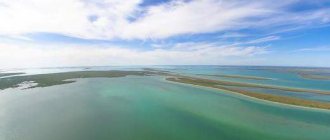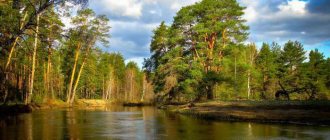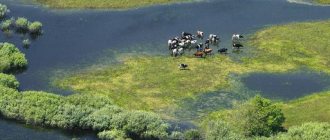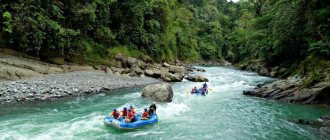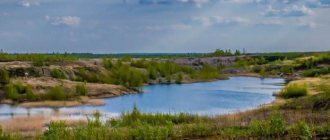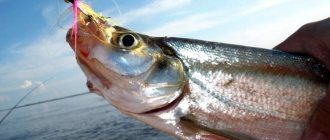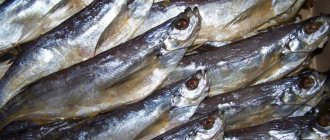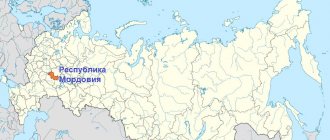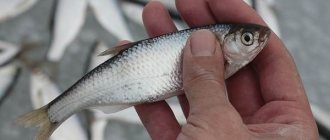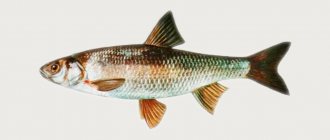Most regions cannot boast of such a variety of underwater inhabitants as the Omsk region. In its rivers and lakes you can find both quite common and rare inhabitants. Fishing in Omsk and the Omsk region is available to everyone. Beginners and professional fishermen will be pleased with the quantity and quality of the catch. Decent specimens are often caught in the region’s reservoirs, and the number of species includes more than 20 representatives of the ichthyofauna.
Fishing in the Omsk region has no seasonality. Fishing is possible all year round in lakes and rivers. Breaks occur only during spawning periods of the ban. When going to reservoirs, do not forget about the ban on catching certain types of fish. Before leaving, you should study all available information to avoid unpleasant situations on the water.
What kind of fish is found in the Omsk region
Fishing in Omsk can bring a lot of positive emotions and impressions. Along with the usual aquatic inhabitants, the catch can be supplemented by quite rare species that are not found in the central zone of the country.
List of fish in the Omsk region:
- nelma;
- ruff;
- crucian carp;
- rotan;
- pike;
- peled;
- gudgeon;
- sterlet;
- saberfish;
- catfish;
- sturgeon;
- zander;
- roach;
- perch;
- ide;
- carp;
- chebak;
- tench;
- loach;
- bream;
- silver carp;
- burbot;
- rudd;
- carp.
fishing ban on certain species But don't be upset. You can try your hand at catching elite representatives of reservoirs in paid areas. Recreation centers offer their guests unhindered fishing for prohibited fish. Underwater inhabitants are bred in artificial or natural reservoirs.
Geographical information
The source is located on the Vasyugan Plain, originating from Lake Omsk, which is located among the Vasyugan swamps. Further, the river flows along the Barabinskaya Lowland in a general direction to the west. The mouth of the river is located in Omsk, 1831 kilometers from the mouth of the Irtysh along its right bank.
The length of the river is 1091 km, the area of its drainage basin is 52,600 km², the average annual water flow is 64 m³/sec, the maximum water flow is 814 m³/sec.
The main tributaries of the Omi: Achairka, Icha (upper tributary of the Omi), Icha (lower tributary of the Omi), Ugurmanka, Uzakla, Kama, Tarka, Tartas, Tarbuga.
The river valley in the upper reaches is unclear, its slopes imperceptibly merge with the surrounding area. In its middle and lower reaches it is trapezoidal, in places asymmetrical. Its width varies widely from 200 meters to 18 km. The slopes of the river valley in the upper reaches are gentle, and in the lower part they are steep, sometimes steep.
The river valley is trapezoidal, in places asymmetrical, its width varies widely from 200 meters to 18 km. The slopes are initially gentle, near the river they are moderately steep to steep, and in areas they are forested and plowed.
The floodplain is predominantly two-sided, swampy in places, crossed by individual ridges, and one-sided in the lower part. Its smallest width is 250 m, its largest is 16.5 km.
The width of the channel during low-water periods is 40-84 m, in places at bends 110-220 m. The water depth on the rifts is 0.3-1.5 m, on the reaches 2.0-4.1 m. Average current speeds vary from 0.1 up to 0.6 m/s on stretches and from 0.3 to 1.0 m/s on riffles.
Current speeds are no more than 0.3-0.4 m/s, maximum - up to 1.4 m/s. The food is predominantly snowy. High water from May to July, sometimes until August. Freeze-up occurs in the second half of October - first half of November, ice drift - in April - early May. Low-water banks are open and overgrown with bushes, 2-10 m high. The average annual flow of the river at the mouth is 52 m³/sec.
The river bed for 5 km from the source is unclear and consists of a series of small lake-like extensions connecting with each other. Below the channel is well defined, strongly winding, unbranched.
The width of the river varies from 15-25 meters in the upper reaches, to 150-180 meters in the middle reaches and up to 220 m in the lower reaches. Depths range from 0.2 to 3.0 m in the upper reaches and from 0.5 to 5.5 m in the lower reaches.
The cities of Kalachinsk, Kuibyshev and Omsk, which got its name from the river, are located on the Om.
In the Novosibirsk region, the river flows through the Ubinsky, Kuibyshevsky, Chanovsky, Vengerovsky, Tatarsky and Ust-Tarksky districts. In the Omsk region, the river flows through the Nizhneomsky, Kalachinsky, Kormilovsky and Omsk districts.
Where to go fishing in the Omsk region
According to statistics, the region is the most visited place in Russia. All year long, thousands of fishermen come to the reservoirs in the hope of catching their treasured trophy. Many come with families and have a great time on the wild shores and recreation centers. The fascinating landscapes and diversity of deep-seated inhabitants will not leave either fishermen or connoisseurs of beauty unimpressed.
Especially for those looking for fishing spots, there are a lot of maps floating around the Internet with the designation of rivers, lakes and other bodies of water. And also indicating the types of fish, characteristics of reservoirs and existing restrictions and prohibitions. In order not to wander through unfamiliar areas in search of fish, you need to prepare in advance and study all the available information.
It would be a good idea to visit forums and ask local fishermen about a particular body of water. Knowing all the habits of river and lake inhabitants, you can count on 100% success.
The most fishing places in the Omsk region
The Omsk region is a fairly large region located in the western part of Siberia. Like all areas of this strip, it is famous for its picturesque forests, beautiful and clean rivers, a large number of lakes and reservoirs.
The forests of the region will certainly be suitable for those who like to hunt and pick mushrooms or berries, and a large number of rivers and lakes will be attractive for lovers of fishing and active recreation. But not all bodies of water are suitable for fishing, so you need to know in advance where to fish in the Omsk region.
Rivers
The most popular rivers are the Irtysh, Om, Ishim, and Osha. But don’t forget about small rivers. You can also catch worthy representatives of the depths in them.
Local fishermen enjoy spending time away from the busy banks of popular rivers. If you make useful contacts, you can count on help and advice from avid fishermen in the region.
Om River
Carp fishermen gather with pleasure on the river of the same name. And also in the waters of the Om you can catch quite decent specimens of pike, bream, crucian carp, and rudd. This is not a complete list of fish that can be found on the river. The most visited place is the area around the village of Kormilovka. There is not only a good bite, but also areas with barbecues for frying the caught fish.
Not far from the village there is a recreation center. Usually fishermen who are accustomed to comfort stop there. It doesn't matter which place is chosen for fishing. Not a single fisherman has ever left Omi without catch.
Irtysh River
Professional beginners are advised to try their luck near the village of Krasnoyarka. You can get there along the Krasnoyarsk Highway. The road will lead bite seekers directly to the banks of the Irtysh. Near the village there is the Kolos sanatorium. The coastal area is equipped with barbecues for preparing the catch. The river offers excellent fishing for catfish, chebak, bream, ruffe, perch, large pike, roach, crucian carp, roach, carp, and bream.
The shore near the village of Novoomsky is considered a good place. It is located near the city and can be reached by car. Anglers need to drive through the populated area and turn through the opening to the river.
Not only summer but also winter fishing is available on the Irtysh. With the opening of the ice season, fishermen from all over the region come to the river. Experienced fishermen advise trying your hand at small backwaters with a weak current. In winter, in addition to the summer variety, fish such as sterlet and pike perch can bite.
Ishim River
The best fishing spots on Ishim are considered to be the shores near the village of Novoyagodnoye. The unique difference between the river and other reservoirs is that the depth in some areas can reach up to 15 meters. To explore record depths, fishermen will have to go to the Znamensky district, which is located 400 km from Omsk.
Osha River
Pike, crucian carp, minnows, perch, and carp are caught along the entire length of the riverbed. The best place is considered to be the shore located near the village of Ust-Logatka.
Lakes
In addition to deep rivers, there is lake fishing in the north of the Omsk region. The region has many standing water bodies of varying sizes. You can choose a fresh or salt lake for relaxation and fishing.
Lake Shchuchye
Those who like to chase pike should head to the lake of the same name, which is located near the village of Nadezhdinka. To catch a pike, you will have to move only 250 km from Omsk. In addition to the striped predator, you can find carp, perch, gudgeon and roach in the reservoir.
Nearby is Lake Linevo with a recreation center of the same name.
Lake Zhiloye
Near the village of Uvalnaya Bitiya there is an artificial reservoir with fresh water. Lake Zhiloye is quite cold and deep. The bite of pike and perch does not stop there both in winter and summer. Fans of winter recreation will enjoy winter burbot fishing.
Experienced fishermen recommend using spinning rods and jigging rods as gear. Baits can be live bait, wobblers, spoons, silicone.
The bottom topography is heterogeneous. The number of holds can spoil the mood. So you should make careful wiring and use anti-hooks. The average depth is from 5 to 10 meters. In some places it can reach 17 meters.
You can get to the lake along the main road. You need to move towards the village of Druzhino through the village of Uvalnaya Bitiya in the direction of the village of Nizhnyaya Bitiya.
Lake Linevo
The most distant body of water from the regional center is Lake Linevo. Despite the kilometers of travel, the lake is almost the most popular body of water among local and visiting fishermen. It’s difficult to get there, but it’s possible. To do this, you will have to drive to the Muromtsevo district to the village of Nadezhdinka.
Lake Ik
Near the settlement of Kiterma, which is located in the Krutinsky district, there is Lake Ik. The width of the reservoir is about 8 km, and the length is more than 12 km. This place is a paradise for carp fishing lovers. The bottom of the reservoir is quite flat and silted. The only drawback is the almost complete absence of other underwater inhabitants.
You can get to the lake through Krutinka. After the village you will have to drive about 3 km along a dirt road along the lake.
Lake Danilovo
The lake differs from other reservoirs in the Omsk region and significantly exceeds them in depth. In some places the depth of the reservoir exceeds 20 meters. The water is clear, there is very little vegetation. At a depth of about 5 meters, you can safely see the bottom and underwater inhabitants. Due to its purity and depth, the reservoir resembles mountain lakes.
A wonderful place for relaxation and fishing. The banks around are gentle, densely overgrown with cattails and bushes. A little further there is a birch and pine forest. You can catch pike, chebak, perch, carp and crucian carp in the pond.
Novoomsky backwater
The depth of the reservoir is no more than 5 meters. You can get to the backwater through the village of Novoomsky. After the settlement you need to turn right and drive through the opening to the Irtysh River. In the summer, crucian carp, ruff and gudgeon bite well in the backwater. The bottom in the backwater is sandy and sometimes there are silted areas.
This is one of the few places for catching burbot in Omsk and the Omsk region. The deep dweller begins to peck with the arrival of cold weather. Novoomsky Bay is quite a popular place for winter fishing. Hundreds of fishermen gather on the reservoir in search of winter trophies.
Paid fishing in the Omsk region
Some anglers prefer to fish in paid reservoirs. The advantages of such fishing include good bite, variety of fish, cleanliness, comfort and other factors.
Based on the results of surveys and ratings, several of the most popular recreation centers on reservoirs can be identified.
Paid fishing places in the Omsk region:
- Kornilovskaya Balka is an artificial reservoir with beautiful nature. At this base you can not only fish for perch, pike, pike perch, but also try your hand at catching trout using a float rod. The price per day is low, but the vacation is pleasant and productive. At the base you can relax with like-minded people or come with the whole family. You can rent a cozy crowbar or camp on the shore in tents.
- Fishing place - located within the city of Omsk. Invites guests to hunt for carp, catfish and sterlet.
- Cool place - speaks for itself. The price of visiting is quite decent. But a good bite and comfortable living conditions are worth the money that fishermen spend per day. At the base you can rent a boat, a boat, a gazebo, or a house. You can get to the base by personal or public transport. Silver carp, carp, sturgeon, pike, catfish, and carp bite well in the reservoir. The base is open all year round.
- Midday pond - located near Omsk. The fishery industry offers anglers only one species of herbivorous fish, but in large quantities. This place is a paradise for carp fishing lovers.
- Chertala base near the village of Priozersk. Fishermen flock to the pond in search of predators. The lake is good for pike perch, perch and pike. Feeders catch crucian carp in the reservoir, but it rarely reaches trophy sizes. Fishing from the shore and from a boat is allowed.
The general rules for guests of recreation centers are basic standards of behavior. Violators face fines and entry bans next season.
General rules:
- It is prohibited to remove surplus fish from the territory. Visitors can only pick up the fish that they paid for in advance upon check-in. For weight exceeding the paid norm, you will have to pay extra or leave it on the premises.
- At the bases they monitor the cleanliness of the water and coastline. It is strictly prohibited to throw garbage on the shore and especially into the water. Violation may result in a heavy fine.
- It is prohibited to use baits with chemical additives that can harm the inhabitants of the reservoir.
Each fisherman decides for himself which body of water to go to. After all, toll and wild shores have their advantages and disadvantages. For some anglers, comfort and good bite are important. Others prefer to catch underwater creatures in free reservoirs, as well as constantly explore new places.
Fishing on the Osha River in the Omsk region
We will talk about pike fishing on the Osha River in 2021, which flows in the Omsk region. We fished near the village of Orlovo, in the Tara region (coordinates are attached). The river in that place becomes more winding, which increases the choice of pools where you can catch the largest trophy.
There is no need to even use a car to move, since a large number of pools are within walking distance. The best catch was there in the fall of 2021. It is worth noting that this year there was an unusually hot and early spring, as a result of which the water in the reservoirs warmed up early and in the summer there were not as many successful fishing trips as years before.
In the fall, real cool fishing began. There were gatherings and major victories, but first things first. It is worth noting that the bite in sunny weather began early in the morning, at about 5 o’clock and lasted until 10-11 o’clock. The fish was taken actively, as if realizing that the sun would soon rise to its zenith. In cloudy weather, the bite continued all day, but the frequency of bites was less frequent.
Considering that the Osha River is not wide, it is convenient for the fisherman to carry the bait almost from one bank to the other. This allows you to catch both large pike in the depths of the pool and modest specimens near the shore. There are no special tricks in fishing, a spinning rod and a silicone fish (the only thing I noticed was that the pike was better taken on a green and medium-sized fish).
Fishing in one place did not bring a good catch. We had to constantly cross Osh from place to place, fortunately the river in that area has many turns. There are many good pools where worthy specimens were caught.
After more than one or two successful fishing trips, a very successful pool was spotted. I came there whenever possible, mostly on weekends. During the day I was busy with work, the drive took about an hour, and the sunny day was getting shorter and shorter.
One of the weekends turned out to be the most successful, I’ll tell you, three good pike were caught (photo reports attached) and a few more average specimens. Not bad, considering that fishing time was from 6 to 11 am. After such fishing I was left with very pleasant impressions and emotions, the mood for the next weekend was amazing.
The next week I went again for the catch, and what do you think... Arriving at the same place, I found three tents. People rested and fished exactly where the largest catch was obtained. I had to look for a new place. Walking along the Osha River I caught several average specimens, but there was no such fishing as I wanted. This concludes my 2021 spinning rod season. It started to get colder and I gave up all attempts at good trophies until next year.
Basic rules for fishing in the area
Before traveling to reservoirs, you need to research places where you can go fishing. Because in the Omsk region, like in any other region, there are prohibitions and restrictions. They mainly relate to the size of the catch, gear, seasonal restrictions and biological resources prohibited from catching.
Forbidden places
According to the rules of the region, fishing in wintering pits is prohibited from November 1 to April 25. Fishing along fish migration routes is also prohibited.
Fishing on the Chulym River is completely prohibited. Restrictions begin to apply from the administrative border of the Krasnoyarsk Territory and end at the mouth of the Chulka River.
Throughout the region, fishing is prohibited from April 20 to May 20 in rivers and from April 25 to May 25 in lakes. The exceptions are float fishing rods and spinning rods with a total number of hooks of no more than 2 per person.
Restrictions and prohibitions
A ban on fishing with certain types of gear has been introduced throughout the region. Some bans apply year-round, while others are seasonal.
It is prohibited to catch:
- Fishing rods (winter - summer) with a total number of hooks of no more than 10 per person.
- There are more than 10 zherlitsa per person.
- Casting rods.
- Trolling (track).
- Shotguns and air pistols without scuba gear and breathing apparatus.
- More than 5 clamshells per person.
- Extraction of live bait using fine-mesh bait with a length of more than 3 meters and a cell of less than 15 mm.
More detailed information should be checked on the official websites. Some waters have local restrictions, so general information may not be correct. To avoid ending up in an unpleasant situation, it is best to check fishing rules with local fishing inspectors.
Minimum fish size:
- pike-30 cm;
- bream-26 cm;
- ide-25 cm;
- cancer-9 cm.
The size is determined fresh. The fish is measured from the nose to the tip of the tail. The mouth must be closed. Crayfish from the line connecting the middle of the organs of vision to the edge of the tail plate.
All biological resources that do not comply with the permitted size must be immediately released into the reservoir.
Prohibited fish to catch
On rivers and lakes you can find a huge variety of species of underwater inhabitants. But it should be remembered that some species are strictly prohibited. If you catch a prohibited biological resource, you must immediately return it to its natural habitat.
Scroll:
- Siberian sturgeon;
- sterlet;
- tench;
- Artemia;
- muksun;
- nelma;
- trout.
Sometimes authorities issue a special permit (license) for certain types of biological resources. But this happens quite rarely. Each case is considered strictly individually.
Fishing on the Irkut River
> Where to fish > Fishing in Russia and around the world > Fishing on the Irkut River
Like any Siberian river, Irkut is famous for its beauty and fish wealth.
Therefore, fishing in the Irkut River
can be a pleasure for any angler. If we consider the Black Irkut River to be the beginning of Irkut, then its length is 488 km, and the area of the river basin is about 15,000 km2.
The Irkut flows through the territory of the Irkutsk region and Buryatia and is a left tributary of the Angara. The sources of Irkut are located at an altitude of 1875 meters, in the spurs of the Eastern Sayan in the Nuksu-Daban mountain cluster. There, near the highest peak of the Eastern Sayan, Munuk-Sardyk, Lake Ilchir is located. It is from this lake that the Irkut River originates.
At the confluence of the Middle and White Irkuts, this river already flows under the name Irkut. Where the Bolshaya Bystraya River flows into Irkut, it turns towards the mountains and there, in the mountains, flows through the Zyrkazun Gorge. Opposite the central part of Irkutsk, the Irkut flows into the Angara. Here the Irkut River significantly loses its swiftness, and the color of the Irkut water is very different from the Angarsk transparent water with a turquoise tint. And these two rivers, as if side by side but without mixing, carry their waters to the Bratsk Reservoir
When compared with rivers such as the Lena, Kirenga or Angara, Irkut has a more modest size, but has much more beautiful and picturesque landscapes. This river flows among majestic steep cliffs, rushes through roaring rapids, then its flow slows down slightly, and then Irkut flows among high steep banks, which are covered with fabulously beautiful taiga, especially during the bird cherry blossom period.
in such pristine and beautiful places in Irkut,
seems like an unforgettable fairy tale. Irkut can be roughly divided into 3 parts; they differ from one another in terms of coastal topography, difficulty of movement, the presence of channels and the number of settlements on its banks.
The upper reaches of the river are practically inaccessible to fishermen and only the most experienced and knowledgeable of the river fish above Kyren. Below, the waters of Irkut gradually slow down and then flow through the Tunka Valley. There the water mixes with silty sand and loses its purity and transparency and turns gray in color. This is one of the most populated places along the banks of Irkut. The road from Irkutsk to Mongolia is laid here. From the village of Tibelti the second part of the river begins, which stretches to the small village of Moty, which is located about 45 km from the city of Irkutsk.
It is this area that most attracts anglers and outdoor enthusiasts. People come here to relax on good fishing, for which there are a great variety of berries, for pine nuts, or simply to enjoy the magnificent beauty of these places and go rafting on the river.
The fauna of the Irkutsk basin is very diverse; rare animals and rare species of fish live here. On part of the territory of the Irkut basin, the Baikal Nature Reserve is located.
There is a very interesting fact that concerns the Irkut River. The river flows towards Lake Baikal, but only 20 km does not reach the lake, and there it turns sharply into the mountains. Scientists have been studying this phenomenon for a long time, but even today a unified version has not been developed to explain this phenomenon. It was this fact that gave rise to several beautiful Buryat legends about the Angara, Irkut and Baikal.
The most catchy fishing in Irkut
, in the places of its lower and middle reaches, it is these places that abound with the most diverse fish.
The most common object of fishing in the waters of Irkut is grayling. Grayling fishing in the Irkut River
is not much different from similar fishing in Altai. However, the grayling that lives in this river is larger in size. And if in the Altai rivers a grayling weighing 300-400 grams is a good catch, then in the Irkut River a fisherman often catches a grayling weighing 1 kg, or even more.
Grayling fishing here is mainly done using gear that local fishermen call a “buldoy”. In principle, such tackle is not much different from that which in the European part of Russia is called “bombarda” or “sbirulino”. The main line is set with a diameter of 0.22-025 mm, and for leashes 0.16-8.17 mm. It is impractical to use a fishing line with a thicker diameter, otherwise the performance of the fly will be much worse, which will quite naturally affect the quantity and quality of bites.
Grayling fishing in the Irkut River often ends with the capture of lenok; this predator of the salmon family is more impressive in size than grayling and shares territory with the latter. Since lenok is an almost omnivorous fish, a fly designed for catching grayling may well be of interest to him, especially if the bait plays in the upper layers of the water. However, for targeted lenok fishing, there are special baits and lures.
Grayling fishing is also common
It is fished using float gear; earthworms are mainly used as bait, less often the larvae of various insects or the insects themselves. After the worm, the most popular bait for a float rod is the grasshopper. Usually, half a grasshopper is placed on a hook across the body; for this, you can use both the back and the front of the insect; it is also recommended that you cut off its wings before placing the grasshopper on the hook.
Lenok fishing in the Irkut River is very popular.
. Most often, this Siberian beauty is caught using spinning baits. Any rod for spinning fishing with a test weight of 7-30 grams is quite suitable for this. Such a rod should be comfortable for long casting.
Lenok is a cautious and rather timid fish, so when fishing, the angler needs to be as quiet as possible using some camouflage methods.
As for equipping the rod with a reel, a spinning reel with a capacity of 120-130 meters of fishing line with a diameter of 0.25-0.27 mm is best suited for this purpose. Of course, you can equip the spinning rod with a thicker fishing line with a diameter of 0.30-0.35 mm, in order to catch taimen. This large Siberian predator is sometimes attracted to lenka baits.
The most catchy baits for catching lenok are rotating spoons weighing from 4 to 10 grams, as well as various fast-playing rubber and foam fish. Catching lenka in Irkut using an artificial mouse made of polyethylene foam is very effective. Similar mice, only larger in size, are used to catch the “master of the river” – taimen.
Happy fishing!
Published: 08/31/2015
Other interesting materials:
| How to quickly remove scales from a perch? Every fisherman has caught perch at some point. This is a pretty tasty fish... | Sonar for a smartphone - will it replace the traditional one? Deeper FishFinder is not the cheapest fish finder, but it is a must... | fishing in Sweden on rivers and lakes photo The amazing nature of Sweden, its coast, picturesque lakes and mountain rivers,… | Fishing on Syamozero in Karelia Karelia is a beautiful region with wonderful nature, majestic… |
